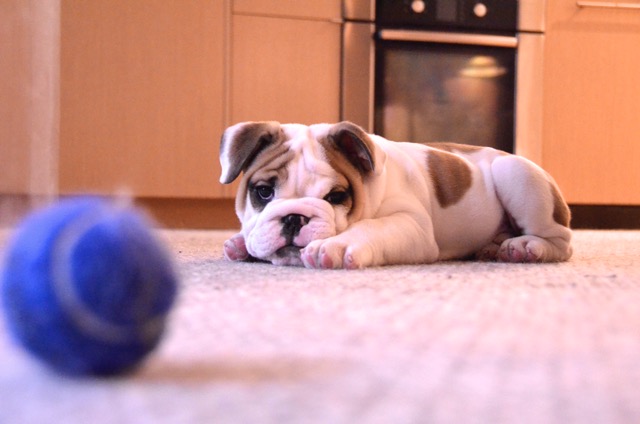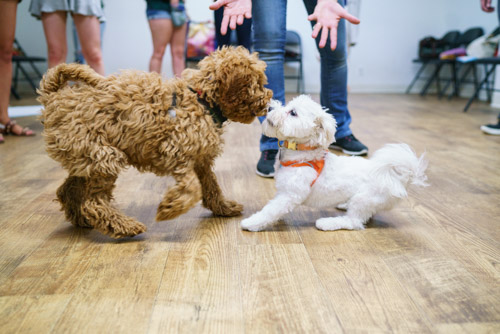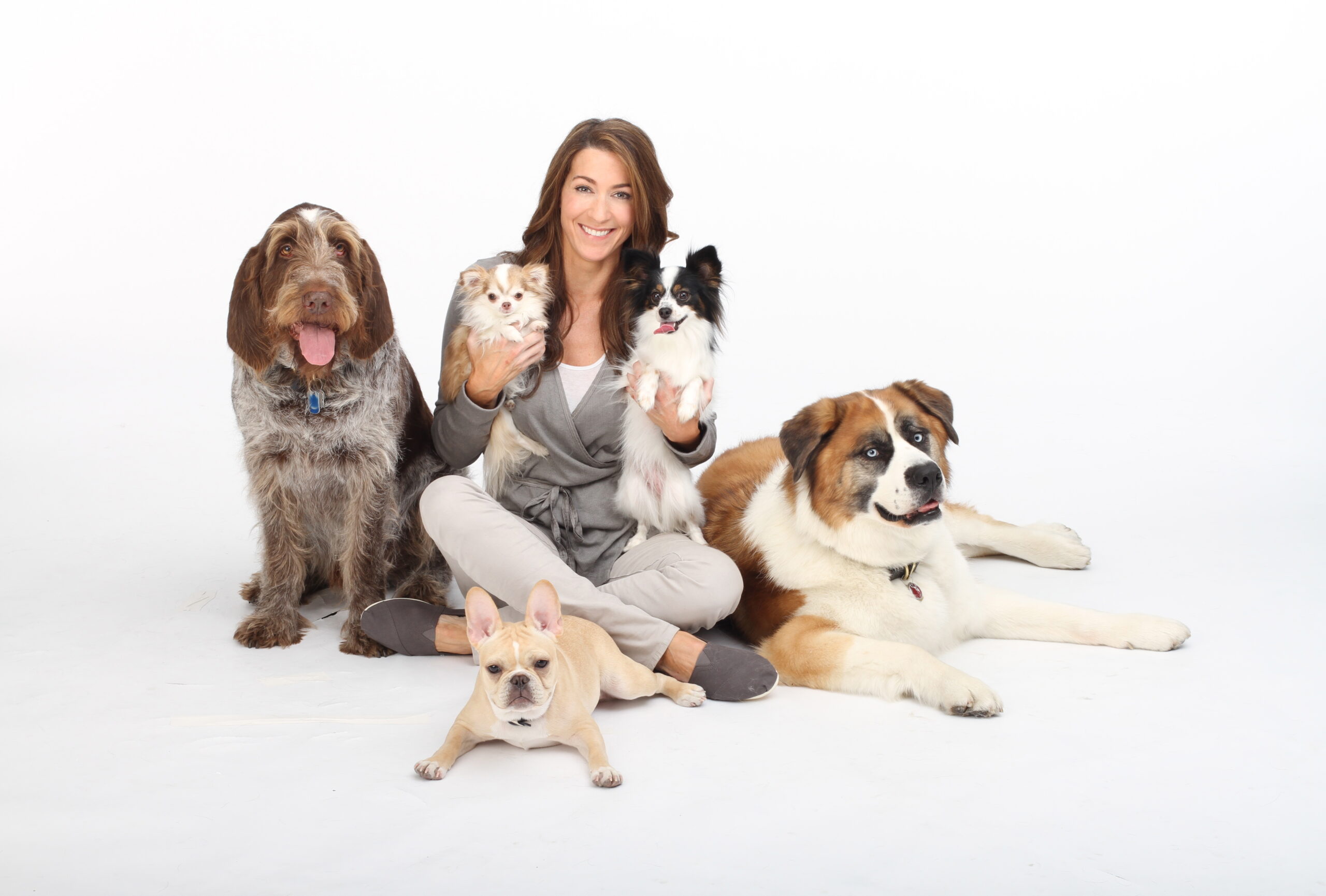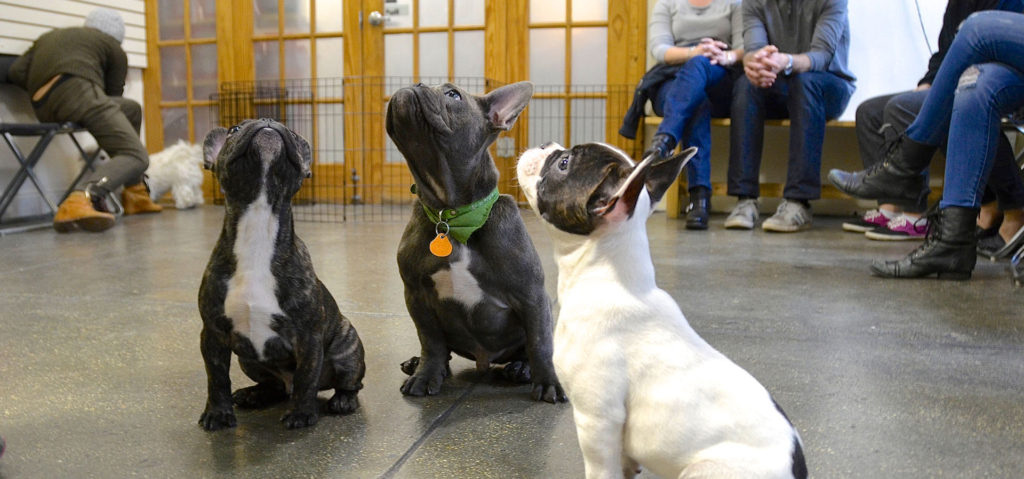
Socialization Of a Puppy In The Big City
- Introduction
- What is Socialization and Habituation?
- Puppy Verses Remedial Adult Dog Socialization and Habituation
- Quantity or Quality?
- Socialization At Home
- Meeting People Outside the Home
- Is it The Great Outdoors or the Big Bad City?
- Conflicting Advice
- Getting Comfortable With Their Own Kind
- A Safe and Clean Place to Play
- Puppy Training Classes and Socialization
Introduction
Urban living for a companion dog can be psychologically challenging because of the many things they must learn to cope with and encounter day to day in the big city. Early socialization and habitation is a critical part of any puppy’s education, but for those being raised in the city the effort and the stakes are even greater. Companion dogs are often required to behave in ways that are counter-intuitive, even restrictive, which adds to their emotional challenges. Your dog will be better equipped to take things in stride if they has opportunities to become familiar with aspects of everyday city life while they are young. A dog that is comfortable in his environment and accustomed to a variety of stimuli can be relied on to behave appropriately.
Predictably good behavior in the outside world is achieved through positive socialization and training during early puppyhood. Exposing your puppy in a gentle and positive way to the world around them will reward both of you with the ability to go places and do things together with pleasure and confidence.
What is Socialization and Habituation?
Socialization is the process of providing your dog with positive social interactions that will prepare them for experiences they will encounter throughout their lifetime. Primary socialization takes place with the pup’s mother, littermates, and human caretaker; and then with the pup’s new human family as soon as they bring them home.
Habituation is the process of providing continued exposure to stimuli over time. This helps your pup develop familiarity with their environment and teaches them to moderate their reactions to unfamiliar things. When a puppy is first exposed to things like traffic, vacuum cleaners, or loud noises they are likely to wonder what it is and possibly have some concerns. Repeated, positive exposure helps them become comfortable around these things and learn to be confident when confronted by similar unfamiliar novelties in the future. A puppy that has been exposed to the world at an intensity they can handle becomes an adult dog that can experience new things with less likelihood of reacting with stress, anxiety, and fear than a dog that didn’t get the benefits of early socialization as a young pup.
Positive experiences via socialization and habituation help your dog to build a library of information that they can draw from when facing life’s challenges. The larger the library, the better equipped they will be. A history of positive experiences becomes the dog’s “social bumper”, making them less sensitive and better able to bounce back from startling or unpleasant experiences.
A dog with limited positive exposure early in life is more likely to approach the world cautiously. A cautious canine is more likely to be stressed, fearful, and possibly even aggressive when confronted by difficult situations. This resulting anxiety also inhibits their ability to learn which makes it difficult to teach the dog to become more relaxed and accepting using positive pairings, conditioning, and counter-conditioning techniques.
Puppy Verses Remedial Adult Dog Socialization and Habituation
Although dogs have the capacity to learn throughout their lifetime, the process of socialization and habituation should ideally begin during early puppyhood. The quality and quantity of a puppy’s experiences will influence their attitude and future behavior much more than subsequent experiences when they are older. Puppies that are deprived of early socialization and habituation often require considerable remedial work throughout their lifetime to become comfortable or tolerate of things they have not seen or done at a young age. Temperament and genetics can play a significant part in an individuals readiness to to be comfortable in a variety of environments and around an assortment of people. Continued reinforcement of early, positive experiences should continue throughout your dog’s adolescence, adulthood, and senior years. Great social experiences are as vital to your dog’s well-being as a nutritionally complete diet.
Quantity or Quality?
The volume and variety of social experiences are important, but socialization is not just a numbers game. The quality of interactions and exposure are equally important factors. You should do your best to control what your puppy learns from each experience. Be selective and discerning so that he is gradually exposed to people, places, and things in a manner that encourages a positive, healthy response. The consequences of a bad experience can be far-reaching for some dogs, especially those with unstable temperaments. Keeping things positive is the key.
Socialization At Home
Many people may mistake the concept of puppy socialization to be limited to interactions with other dogs and friendly strangers, but as you now know, socialization encompasses a whole lot more. Getting your puppy accustomed to, and comfortable with the sights, sounds, and smells of city life is as, if not even more important. It is critical that a puppy be comfortable with the situations that will most likely be a part of its unique life circumstances. Is is of the utmost importance that your puppy is comfortable in their home, with the members of their family and friends, and the activities involved in their care routine.
After a puppy leaves their liter-mates and mother, their primary bond is with their human family. A puppy’s secondary bonds are formed with people outside the home. At-home socialization should be part of your puppy’s daily routine. However, you must be observant of signs that you may be exposing your pup to more than they can cope with. This may be what is happening if your pup is reacting with avoiding and extreme caution.
Some areas to be focusing on would be:
- Gently handling every part of your pups body to prepare them for daily care, veterinarian exams, and grooming
- making sure they are practiced at and comfortable with being grabbed, leashed, picked-up, and gently restrained.
- making sure they are accepting and comfortable with having items taken away from them, and people being close by things they value such as food.
- If young children are or will be in the picture, being sure your puppy is comfortable will all things baby and child related.
It is advisable to work with a professional trainer privately and/or in a group setting to help provide you with guidance on raising a well rounded, well adjusted puppy using positive reward based training techniques.
Meeting People Outside the Home
Allowing your puppy to become so overly attached to you or another single member of the family can cause numerous avoidable problems such as separation issues, the ability to self-sooth and pacify, challenges at the vet and groomer, as well as with dog walkers, pet sitters, and friends. Your puppy should have a balance of personal attention, time spent alone resting and playing with safe chew toys, and social interactions outside your family group.
Consistent socialization helps your puppy build confidence and develop positive associations about all things human.
To accomplish this, your puppy should have regular exposure to:
- people of all ages, ethnicities, sizes, shapes, and genders
- people with varying types of facial hair
- people wearing glasses, hats, uniforms, gloves, heavy winter coats and rain ponchos – this is especially important for summer puppies so they are not surprised by the way people look bundled up in winter gear.
- people carrying items such as umbrellas, packages, luggage, walkers, strollers and the like.
Without positive, repeated exposure, even the friendliest dog may be startled or frightened by some of these things. Take your pup for frequent visits to your vet office at times other than when a vet exam exam is scheduled. This allows you to do some simple training exercises, give them treats, and get your pup comfortable and happy in the environment. Following this procedure of building positive associations with places and people can also be done at the groomer, in stores, in your building lobby if that applies to you.
Socializing is a skill that some people master better than others. The same holds true for dogs. Provide your dog with the best chance to have a large, admiring social circle by teaching them that meeting people calmly is a rewarding experience. However, sometimes it is difficult to control the interactions your pup may have with various people in the public. Most people who approach and want to meet your puppy will have little awareness of the effect their own behavior can have on your puppy’s experience. They may over-excite of even frighten your puppy by squealing with excitement or approaching to rapidly. They may encourage and reinforce your puppy for mouthing on their fingers and clothes or jumping up excitedly. It is your responsibility as your pups parent to manage the quality of your pup’s social interactions. If a person is unwilling to make eye contact with you so you can give them some instructions when needed, this would not be a good person to let say hello to your young, impressionable puppy.
Is it The Great Outdoors or the Big Bad City?
It’s a great big world out there and your dog can have a wonderful future experiencing all it has to offer going on adventures with you. But this can’t happen unless you help them become tolerant and comfortable with things that might otherwise cause concern. The list of things a city dog will need to become comfortable with in order to thrive in an urban environment are far more numerous that a rural or even suburban canine. The list may include:
- Moving and loud vehicles (engines and horns): cars, trucks, trains, subways, motorcycles, skateboards, bikes, and shooters.
- Different terrain and weather conditions: sand, gravel, grass, dirt, concrete, metal, floor grates, wood, marble, snow, mud, rain, etc.
- Unfamiliar places: training facilities, pet supply stores, shops, local parks, outdoor restaurants, shopping malls, the veterinarian’s office, a grooming shop or truck, other people’s homes, lobbies, elevators, and stairs.
- Unusual sounds: hair dryer, vacuum, brooms, washing machines, blowers, food processors, garbage disposals, construction, and even people yelling (at the TV or each other).
It’s normal for a puppy to be startled by an unfamiliar sound. Prevent this normal reaction from escalating into a fear or phobia by providing the pup with repeated but manageable exposure (at an intensity the pup can handle) to different sounds while offering food, toys, and play to help build a positive association.
Conflicting Advice
New puppy parents learning about the importance of exposing their puppy to the world around them may wonder how to achieve this while still keeping their puppy safe from disease. To further complicate the challenge of getting your puppy comfortable with its environment while their brain is most receptive to new experiences is the vaccination schedule. Puppy vaccinations occur in rounds over a period of time. Some vets may recommend that you begin taking your puppy outside be mindful and using common sense practices at 8 weeks of age, while others may recommend waiting until your puppy if fully vaccinated around 16 weeks or so of age. If your veterinarian advises against taking your puppy out for a walk on city streets their are still safe and effective ways to get your puppy the daily socialization and habitation needed to raise a well adjusted city dog.
- Take your pup for a daily carry around the neighborhood indoor arms or a travel carry bag
- Pair the sights and sounds of the city with tasty treats and your upbeat attitude so you shape your pups perceptions about intense city life.
- Take your pup for car rides, taxi rides, and on the subway in an approved pet carry bag (especially if you have a small dog you plan to travel with and transport).
- Sit on a park or street bench with your pup on your lap pairing the sights and sounds of the city with tasty treats.
- Take your pup on safe errands where dogs are allowed ( the bank, post office, clothing stores, book shops, etc).
Your puppy does not have to have their paws on the ground or their nose in the curb to begin learning about their world. It you wait to bring your puppy into the world, it’ll be a real shocker for them. The puppy’s genetics will play a role in how inquisitive and open minded they are about new things. A more cautious and reserved puppy will struggle harder adapting to city life if they spend their first few formative months being raised in a protective bubble/a city apartment.
Getting Comfortable With Their Own Kind
Dogs must learn the art of proper social behavior with their own species. Puppies typically have plenty of interaction with their own mother and littermates. After they go to their new human forever home, they will need opportunities to continue practicing these canine social skills throughout puppyhood and adolescence. To do this, they need regular interactions with dogs of different types, ages, and sizes.
Without these experiences a dog may become incapable or unmotivated to relate to their own species. As a result, they may be anxious, irritable, and even aggressive when meeting other dogs on the street or in the vets office. This can be particularly difficultly and unpleasant for the city dog and owner who will likely need to pass by numerous dogs on a daily basis. Not every dog will, nor needs to be the life of the party, and there are advantages to not being the pet parent of a social butterfly, but you do want your city dog to at least be comfortable in the presence of its own kind so you can walk with ease and enjoyment through your city environment.
Greeting dogs on leash in public places is generally not the best way for them to interact. An overly enthusiastic reaction may be considered rude by the other dog, leading to an aggressive correction. The leash also inhibits normal body language that is used to keep the interaction friendly. A tight leash may even encourage aggression because the dog may feel threatened and unable to move a safe distance away. If a dog feels trapped, it may react defensively and fight. You also do not know the person and dog and can’t assure your pups mental and physical well being is not at risk.
Additionally, allowing your puppy to greet every dog they see on the street will undermine your training program. Rather than walking politely along with you, your dog may get into the habit of pulling towards dogs (whether they want to say hi or not) and getting frustrated when they can not. Off leash play in a safely enclosed area is the best option.
A Safe and Clean Place to Play
Many dog training schools and some veterinary practices have trainer supervised puppy playgroups where young pups can meet and begin to learn good canine social skills and practice their body language. Having a clean indoor space decreases the risk that your puppy will be exposed to things their young immune systems may not be ready for yet. It also allows for puppies that have not completed all their rounds of vaccines to get the benefits of yearly puppyhood socialization. Three to 16 weeks is generally considered the prime time for a puppy to optimize the benefits of early socialization. This means, if the pup does not begin socialization until they have completed vaccinations at 4 to 5 months of age, they may be at a disadvantage behaviorally. Having a professional trainer or other puppy behavior expert guiding the playgroup is an invaluable educational opportunity for not only the puppies but for the puppy parents as well. A city dog park is not an appropriate place for your young puppy to learn to play with other dogs.
Although there are certainly broad generalizations, every dog has their own way of engaging in play. Some like to chase, while others prefer to be chased. some dogs tend to lay on the ground and mouth another dog, while others prefer standing up and wrestling with their paws. While style and interest may vary, play sessions always include some actions that replicate fighting, predatory behavior, and reproductive displays, such as shoulder pawing, raised hackles, brief periods of mounting, and teeth displays. This can make it challenging to distinguish between play and real fighting. A baseline understanding of your dog’s play style will help prevent impending trouble. This is where trainer moderated play groups can be beneficial. An expert pair of eyes can help you recognize the difference between normal, safe dog play, and a play date that is tipping into something more problematic. The professional play group moderator will guide puppy parents on when to intervene, interrupt, or call it quits for the day.
When worried or wondering if a play session may be escalating into an actual fight, here are some questions to address:
- Is either dog bothered by the interaction?
- Are both dogs choosing to continue, or is one trying to escape?
If you are concerned that a pup may need you to intervene, remove the dog that seems to be bullying and hold them off to the side for a moment. It is likely a false alarm if the pup you thought needed a break bounces over to their restrained companion to reengage in play.
Play should include a combination of excitement and self-control. Most healthy, safe dog play is interspersed with moments when one or both dogs attempt to tone things down. They send out reminder signals, such as a play bow, to say that this is all meant in good fun. They might also temporarily disengage from play and signal this by slowing down their movement, lying down, sitting, rolling over, or averting their gaze.
Similar to a sports game, even the most exuberant and physical athletes must play by the rules for the game to continue. In this case, each dog has their own rules, and these will vary depending on whether the playmate is a close canine buddy or a potential new friend. Young puppies have a lot to learn when it comes to developing good play styles and polite rules of engagement.
A dog with superb social skills is able to temper or modify their play behavior according to a playmate’s play style. In addition to bite inhibition, many well-socialized dogs will modify other aspects of their body language and posture. Large dogs may flop to the ground to play with a smaller dog or be less likely to wildly chase. In many cases, the appropriateness of play interactions between dogs is governed by their play style and abilities to modify their behavior to accommodate their playmate rather than the size and age of the dogs.
It is usually obvious if a dog’s arousal level reaches a point at which they are losing the ability to modify and/or inhibit their behavior during play. When this happens it is the humans responsibility to step in like a referee in a sports game, because a time-out from play is in order.
Puppy Training Classes and Socialization
Puppy training classes offer puppies the dual benefits of beginning basic training along with socialization with the added advantage of getting advice, guidance, and feedback from an experienced puppy professional. Puppies that received early socialization and attend classes are more likely to remain with their human families and to experience a happier overall life. A good puppy class can help to install desirable behaviors, such as paying attention, following, sit, down, stay, body handling, and a reliable recall; settling quietly with a chew toy, and acquiring anti-resource guarding skills, along with numerous other skills.
In addition to socialization with dogs and people, classes are an opportunity to practice training skills around controlled distractions making the challenge of having a dog pay attention to you in the outside world easier. Play sessions with the other puppies in class can be used as a reward for the pups responding to their peoples requests. For instance, when the puppy sits on cue they may be rewarded with off-leash play.
The trainer should outline the expectations, and rules of engagement. They should also provide a running commentary on what is going on during playtime so you become more informed, as well as intervening often to prevent any puppy from becoming a victim or practicing bullying. Much of this involves interruption and redirection until reciprocal play is happening.
A well structured and organized puppy class can be one of the most beneficial experiences for a new pup and their family. However, puppy classes should not be the extent of our puppy’s education or exposure to people and other dogs outside the home. It should be a supplement to your puppy’s ongoing education and socialization that needs to take place everyday. The time you put into your pups early socialization will be an investment that keeps paying back for a lifetime with your well adjusted, happy adult dog.
Educate your dog with Andrea Arden and her team.
New York | Los Angeles | Connecticut
Share
- Group Classes
- Private Lessons
- Virtual Training
- Puppy Play Groups
- Puppy Training
- Articles & Advice






